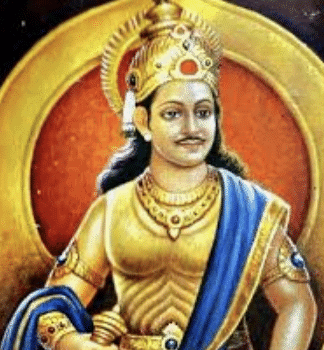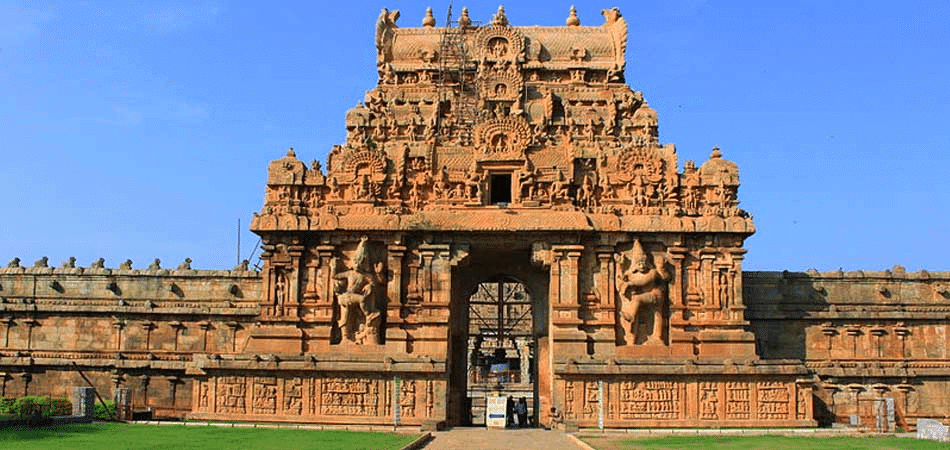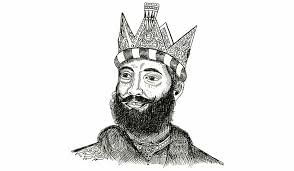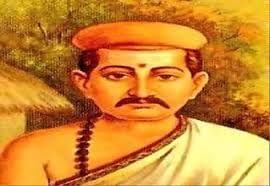Important Questions: Kings and Kingdoms | Social Studies (SST) Class 7 (Old NCERT) PDF Download
Q1: Describe the irrigation system of the Chola kingdom.
Ans: The irrigation system during the Chola dynasty was significantly advanced. Key features included:
- Wells were dug in various locations to access groundwater.
- Large tanks were constructed to collect and store rainwater.
- The kings actively organized labour and resources for irrigation projects.
- Extensive planning was essential for effective water distribution and maintenance.
This system supported the growth of agriculture, particularly in rice cultivation.
Q2: Who looked after the Brahmadeya?
Ans: The Brahmadeya was managed by an assembly known as a Sabha, which consisted of prominent Brahmana landholders.
- The Sabha was responsible for various administrative tasks.
- It operated efficiently, with decisions often recorded in inscriptions.
- Committees within the Sabha handled specific areas such as irrigation and temple maintenance.
- Membership was limited to landowners aged between 35 and 70 with knowledge of the Vedas.
Q3: Who was Dantidurga? How did he become a Kshatriya?
Ans: Dantidurga was a chief of the Rashtrakuta dynasty in the Deccan region. Initially, the Rashtrakutas were vassals of the Chalukyas of Karnataka.  In the mid-eighth century, Dantidurga:
In the mid-eighth century, Dantidurga:
- Overthrew his Chalukya overlord.
- Performed a ritual called hiranya-garbha (meaning "golden womb").
This ritual was believed to enable the sacrificer to be reborn as a Kshatriya, even if they were not born into that caste.
Q4: Write a note on ‘Prashastis’.
Ans: Prashastis were compositions typically authored by learned Brahmanas, detailing the reign and accomplishments of kings. While these texts may not always be factually accurate, they serve to illustrate how rulers wished to present themselves.
- They often depicted kings as valiant and victorious warriors.
- Brahmanas received land grants as rewards for their services, which were documented on copper plates.
- Prashastis provides insights into the political and social dynamics of the time.
Q5: Why were the temples first targets of the conquerors?
Ans: The conquerors often targeted temples for several reasons:
- Temples were symbols of power and wealth, showcasing the resources of the rulers.
- Rulers invested heavily in the decoration and upkeep of these structures.
- Attacking temples was a way to undermine the enemy's authority.
- A notable example is the temple of Somnath in Gujarat, which was looted multiple times by Mahmud of Ghazni from Afghanistan.
- The wealth taken from such temples was often used to enhance the conqueror's own capital, as seen with Mahmud's city at Ghazni.
 Q6: What was the role of temples during the Chola kingdom?
Q6: What was the role of temples during the Chola kingdom?
Ans: The temples during the Chola kingdom played a significant role in society. Key points include:
- The Chola rulers, such as Rajaraja and Rajendra, constructed major temples in Thanjavur and Gangaikonda-cholapuram.
- Temples served as the nuclei for settlements, fostering community growth around them.
- They were centers of craft production and managed financial activities related to these crafts.
- Beyond their religious significance, temples were hubs of economic, social, and cultural life.
Q7: What was the system of election of committee members for Sabha?
Ans: The Sabha had distinct committees responsible for managing various tasks, such as irrigation and maintenance of gardens and temples. The election process for committee members was as follows:
- Eligible candidates' names were written on small palm-leaf tickets.
- These tickets were placed into an earthenware pot.
- A young boy would draw the tickets one by one for each committee.
Q8: Write a note on Sultan Mahmud of Ghazni
Ans: Sultan Mahmud of Ghazni ruled Afghanistan from 997 to 1030. He was an ambitious king who sought to expand his territory.
- He extended his control over parts of Central Asia, Iran, and the northwestern subcontinent.
- Mahmud raided the subcontinent almost every year, targeting wealthy temples.
- The temple of Somnath in Gujarat was particularly affected by his raids.
- Much of the wealth he acquired was used to build a magnificent capital city Ghazni.
- Mahmud was interested in the cultures he conquered and commissioned the scholar al-Biruni to document the subcontinent.
- Al-Biruni's work, titled Kitab al-Hind, remains an important historical source.
Q9: What was Bramhadeya?
Ans: Brahmadeya refers to land that was specifically gifted to Brahmins. This practice led to the establishment of numerous Brahmana settlements, particularly in the Kaveri Valley and other regions of South India.
- The land was often managed by an assembly, known as a sabha, composed of prominent Brahmana landholders.
- These assemblies were efficient, with their decisions recorded in inscriptions on temple walls.
- Inscriptions from places like Uttaramerur provide insights into the organization of these assemblies.
- Committees within the sabha were responsible for various tasks, such as irrigation and temple maintenance.
Q10: Which inscription gives the detail of the organization of the Sabha?
Ans: The Uttaramerur inscription from the Chingleput district of Tamil Nadu provides detailed information about the organization of the sabha.
The sabha was responsible for various administrative functions.
It had separate committees for:
- Irrigation works
- Gardens
- Temples
Members eligible for these committees were selected through a unique process:
- Names were written on palm leaf tickets.
- A young boy drew the tickets from a pot to select members.
Q11: Trace out the emergence of the new class of rulers.
Ans: By the seventh century, a new class of rulers began to emerge in the subcontinent. These rulers were known as samantas, who were initially subordinates to powerful landlords or warrior chiefs.
- Samantas were expected to:
- Bring gifts to their kings
- Attend royal courts
- Provide military support
- As they gained wealth and influence, many declared themselves as maha-samantas or maha-mandaleshvara (great lord of a region).
- Some samantas, like the Rashtrakutas, eventually asserted their independence from their overlords.
- Dantidurga, a Rashtrakuta chief, overthrew his Chalukya overlord in the mid-eighth century and performed a ritual called hiranya-garbha, symbolizing a rebirth as a Kshatriya.
- Others, such as the Kadamba Mayurasharman and Gurjara-Pratihara Harichandra, were Brahmanas who used their military skills to establish kingdoms.
These developments marked the rise of new dynasties across the region, significantly altering the political landscape.
Q12: How was the financial position controlled in these states?
Ans: The financial position in these states was managed through various means:
- Resources were sourced from peasants, cattle-keepers, and artisans.
- Producers were often compelled to give up a portion of their output.
- Traders were required to pay revenue to the state.
- Revenue collection was typically handled by functionaries from influential families or close relatives of the kings.
Q13: Who was Kalhana? What was he famous for?
Ans: Kalhana was a notable Sanskrit poet known for his significant contributions to literature.
- He composed a lengthy Sanskrit poem detailing the history of the rulers of Kashmir.
- Kalhana utilized various sources, such as inscriptions, documents, and eyewitness accounts.
- Unlike many writers of his time, he often critiqued rulers and their policies.
Q14: Who was Prithvirqja III? Who defeated him?
Ans: Prithviraja III (1168-1192) was a ruler of the Chahamanas, also known as the Chauhans. He governed the regions around Delhi and Ajmer.
- He initially defeated Sultan Muhammad Ghori, an Afghan conqueror, in 1191.
- However, he was defeated by Ghori just a year later, in 1192.
- This defeat marked the end of both his rule and his life.
Q15: How did the Cholas rise to power? Trace out the role of Rajaraja I in this rise.
Ans: The Cholas originated from a minor chiefly family known as the Muttaraiyar, who held power in the Kaveri delta. Initially, they served as subordinates to the Pallava kings of Kanchipuram. In the mid-ninth century, Vijayalaya, a member of the ancient Chola family from Uraiyur, seized control of the delta from the Muttaraiyar. He established the town of Thanjavur and built a temple dedicated to the goddess Nishumbhasudini. Vijayalaya's successors expanded the kingdom by conquering neighboring regions, incorporating the territories of the Pandyas and Pallavas to the south and north. Rajaraja I, who became king in 985, is regarded as the most powerful Chola ruler. He significantly expanded the kingdom and reorganized its administration. His son, Rajendra I, continued these efforts by invading the Ganga Valley, Sri Lanka, and parts of Southeast Asia, developing a navy for these campaigns. The grand temples of Thanjavur and Gangaikonda-cholapuram, constructed under their reign, are celebrated as architectural masterpieces.
|
63 videos|552 docs|46 tests
|
FAQs on Important Questions: Kings and Kingdoms - Social Studies (SST) Class 7 (Old NCERT)
| 1. What are the major kingdoms that existed in ancient history? |  |
| 2. How did kings maintain control over their kingdoms? |  |
| 3. What role did religion play in the governance of ancient kingdoms? |  |
| 4. How did trade impact the growth of ancient kingdoms? |  |
| 5. What were the common challenges faced by ancient kingdoms? |  |

















